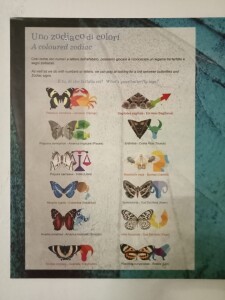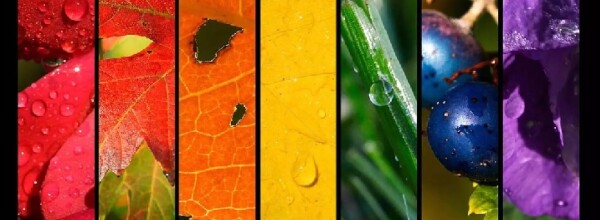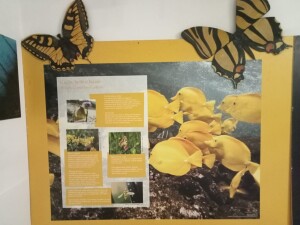THE BUTTERFLY COLORS
 Today, between butterflies and moths, there are more than 150,000 species of them. On their wings we find colors and drawings among the most disparate, a sign of the enormous biodiversity that characterizes this animal group. Some they recall, in a truly surprising way, symbols created by man, such as numbers and letters of the alphabet.
Today, between butterflies and moths, there are more than 150,000 species of them. On their wings we find colors and drawings among the most disparate, a sign of the enormous biodiversity that characterizes this animal group. Some they recall, in a truly surprising way, symbols created by man, such as numbers and letters of the alphabet.
HOW DO WE SEE IT?
It is not yet fully understood how we and animals see colors, but we know their perception depends on how the eyes read light frequencies and how the brain processes these signals. In the end, what everyone sees is just something resembling reality. How do the eyes perceive light? In the eyes of more complex organisms exist, in addition to the structures that see black and white size (rods), structures dedicated to the perception of colors (cones). We, as well as anthropomorphic apes, have three types of cones, capable of capturing the three primary colors additives: red, green and blue. Their total overlap gives the white, the partial one, a whole range of intermediate colors.
WHO SEES WHAT?
The butterflies see more colors are some papilionids get 4 to 5 types of cones. They perceive, in addition to the colors we see, also ultraviolet rays, and are also more sensitive to violet e to dark red. Most mammals see only two colors and don’t see red. Fish have developed different degrees of perception. There are species, such as goldfish, which, like the butterflies, they also see the ultraviolet. Most of the deep-sea fish instead, as well as the squid, see a only color, i.e. blue, the only one that can be perceived at a certain depth.
HOW DOES A BUTTERFLY SEE?
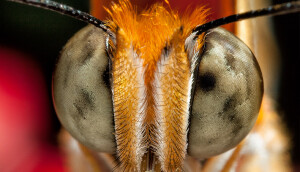 The eyes of butterflies are composed of thousands of functional units (ommatidia) which are hexagonal and all joined to form a hemisphere (compound eye). Each ommatidium contains a lens conical and the rhabdomer, a fiber-optic-like structure where light enters, bounces and stimulates laterally the nerve cells. What arrives at the butterfly’s brain is one sort of puzzle that the insect has to put together to form the image. Do butterflies close their eyes? Each individual ommatidium is covered by pigment cells which move away or approach each other depending on the the light is less or more intense. This is their way of closing their eyes. The corneal surface of many butterflies is micro-corrugated. This has a double function: to reduce optical losses and avoid reflections that allow their identification by predators. This structure is called “moth eyes” and is used by the space industry to increase the efficiency of solar panels.
The eyes of butterflies are composed of thousands of functional units (ommatidia) which are hexagonal and all joined to form a hemisphere (compound eye). Each ommatidium contains a lens conical and the rhabdomer, a fiber-optic-like structure where light enters, bounces and stimulates laterally the nerve cells. What arrives at the butterfly’s brain is one sort of puzzle that the insect has to put together to form the image. Do butterflies close their eyes? Each individual ommatidium is covered by pigment cells which move away or approach each other depending on the the light is less or more intense. This is their way of closing their eyes. The corneal surface of many butterflies is micro-corrugated. This has a double function: to reduce optical losses and avoid reflections that allow their identification by predators. This structure is called “moth eyes” and is used by the space industry to increase the efficiency of solar panels.
MEANING OF THE VARIOUS COLORS
In nature, however, colors are very important because they are used by fauna and flora as a means of communication. Each of them has a different meaning, let’s see every one in detail!
RED LIGHT!
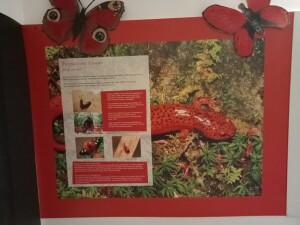 Red is the color of those who want to be seen as it stands out from the others, especially from the green, grey, beige and brown tones that dominate the natural environment. Red animals usually want to communicate their poisonousness. Obviously, the rule is to let them know before being eaten or “tasted”. Among those who use this strategy are animals, plants and even mushrooms. Many species of animals use the same red color as poisonous ones in order not to be preyed upon. Yes, this is often a cheat, which works if the imitator is not a very common species.
Red is the color of those who want to be seen as it stands out from the others, especially from the green, grey, beige and brown tones that dominate the natural environment. Red animals usually want to communicate their poisonousness. Obviously, the rule is to let them know before being eaten or “tasted”. Among those who use this strategy are animals, plants and even mushrooms. Many species of animals use the same red color as poisonous ones in order not to be preyed upon. Yes, this is often a cheat, which works if the imitator is not a very common species.
YELLOW, BEAUTIFUL AND “FATAL”
For many animals, yellow is a sign of recognition between male and female. In birds, as some scholars have shown, the yellow spots on males are a sign of physical vigour. Contrary to what it seems, many butterflies are yellow for camouflage. The association of dark and yellow colors make the butterflies invisible when they fly over the meadows. Yellow, in our latitudes, is also the color that characterizes many wasps and even more greater than their imitators, who exploit their “fame” to remain undisturbed and protected.
RARE AND PRECIOUS BLUE
In the animal kingdom the blue color is certainly one of the most beautiful and admired. Generated blue is very rare among animals and usually has a sexual and territorial significance. The blue butterflies par excellence are the legendary Amazonian Morphos, which you can also find in the aviary. Their males are often much more colorful than the females, and for this reason capable of signaling their presence even from a considerable distance and of confusing predators.
GREEN TO DISAPPEAR
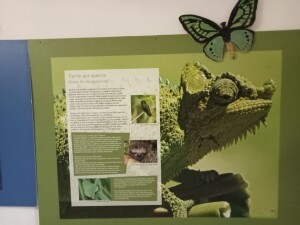 Being green means blending in with the dominant color in nature. Plants are green for a pigment: the chlorophyll. In insects, green pigments are rare and are usually derived from bile. Being green is not only used to defend oneself, but also to attack and prey, as in the case of chameleons and mantises. In Italy lives the only butterfly that is almost entirely green, the blackberry bush (Callophrys rubi), while among the tropical species, the beautiful ornithopteras and some Papilio of the Indo-Australian area are partially green.
Being green means blending in with the dominant color in nature. Plants are green for a pigment: the chlorophyll. In insects, green pigments are rare and are usually derived from bile. Being green is not only used to defend oneself, but also to attack and prey, as in the case of chameleons and mantises. In Italy lives the only butterfly that is almost entirely green, the blackberry bush (Callophrys rubi), while among the tropical species, the beautiful ornithopteras and some Papilio of the Indo-Australian area are partially green.
MYSTERIOUS BLACK
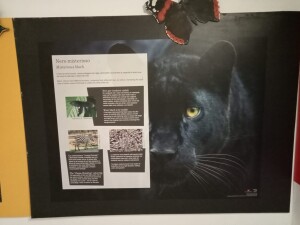 Black has various functions, such as protecting against ultraviolet rays and increasing the ability of certain areas of the body to capture the sun’s heat. The black colors have an important role for animals that want to communicate their danger or poisonousness. The alternation of black bands or spots and similar clear shapes (e.g. zebra stripes) has the function of don’t perceive the shapes of the animal’s body. This is a type of mimicry that is referred to as disruptive, or intended to make the animal unrecognizable.
Black has various functions, such as protecting against ultraviolet rays and increasing the ability of certain areas of the body to capture the sun’s heat. The black colors have an important role for animals that want to communicate their danger or poisonousness. The alternation of black bands or spots and similar clear shapes (e.g. zebra stripes) has the function of don’t perceive the shapes of the animal’s body. This is a type of mimicry that is referred to as disruptive, or intended to make the animal unrecognizable.
MULTIFUNCTION WHITE
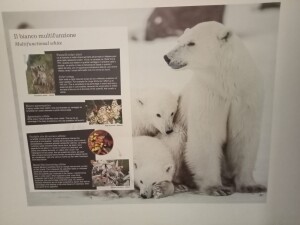 The white or very light wings allow the animal to reflect a large part of the solar radiation. This can be a great advantage in hot and sunny environments, but also in case of low temperatures as the heat of the sun, with a suitable inclination of the wings, can be reflected towards the body of the insect which is normally darker.
The white or very light wings allow the animal to reflect a large part of the solar radiation. This can be a great advantage in hot and sunny environments, but also in case of low temperatures as the heat of the sun, with a suitable inclination of the wings, can be reflected towards the body of the insect which is normally darker.
A ZODIAC OF COLORS
The shapes and designs on the wings of butterflies are not accidental. They represent complexity and balances of life. As well as with numbers and letters of the alphabet, we can play to recognize a link between butterflies and zodiac signs.
And you. Which butterfly are you?
